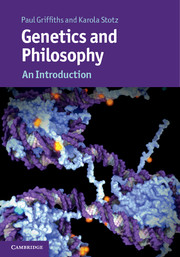5 - Outside the genome
Published online by Cambridge University Press: 05 April 2013
Summary
Introduction
As the past 70 years made abundantly clear, genes do not control development. Genes themselves are controlled in many ways, some by modifications of DNA sequences, some through regulation by the products of other genes and/or by [the intra- or extra-cellular] context, and others by external and/or environmental factors.
(Hall 2011, 9)In the previous chapter we saw that regulated expression of the genome depends on many other factors besides the DNA sequence. We established that these other factors are not merely background or ‘permissive’ causes which allow the expression of the Crick information contained in a coding region. Instead, regulatory mechanisms differentially activate and select coding sequences depending on the context, and thus contribute additional Crick information, and some mechanisms create Crick information for which there is no underlying sequence. Crick information, we argued, is distributed between the coding regions in the genome and the regulatory mechanisms that use those coding regions to make products. Our focus in this chapter is on the role of the environment, the ‘developmental niche’, in that regulatory machinery.
Many biologists familiar with the mechanisms described in Chapter 4 think that their action can be traced back to other regions in the genome, so that the genome as a whole remains the sole source of biological specificity. It is certainly true that regulatory gene products and the genome regions to which they bind are at the heart of most of the mechanisms we described. But this is nowhere near sufficient to establish that the genome is the sole source of specificity. That idea is more difficult to state precisely, let alone to defend, than most of its advocates realise. We think that most versions of the idea equivocate between two or more of the senses of ‘genetic information’ that we will explore in Chapter 6.
- Type
- Chapter
- Information
- Genetics and PhilosophyAn Introduction, pp. 108 - 142Publisher: Cambridge University PressPrint publication year: 2013

